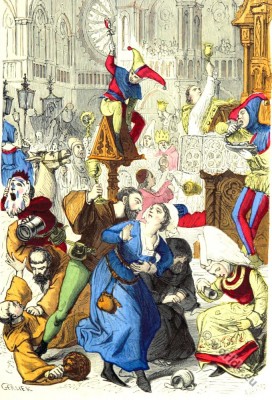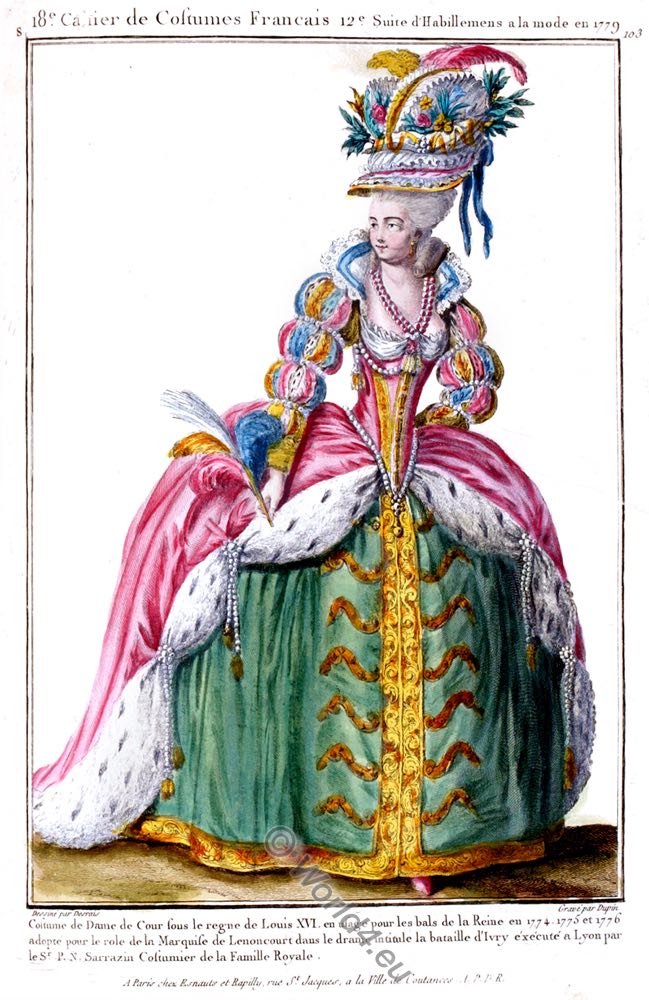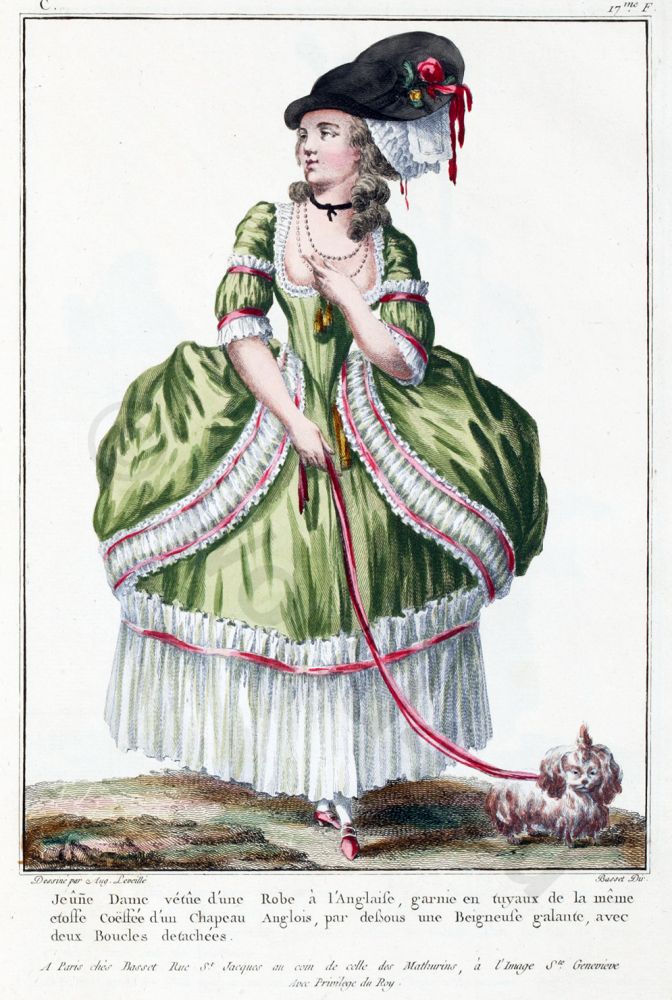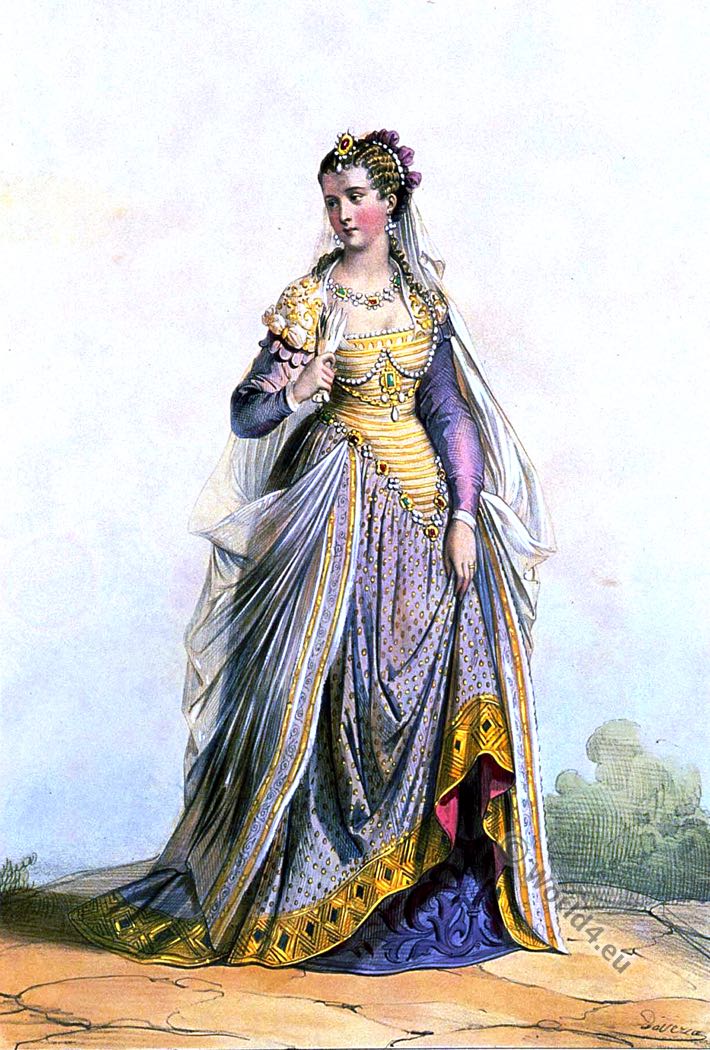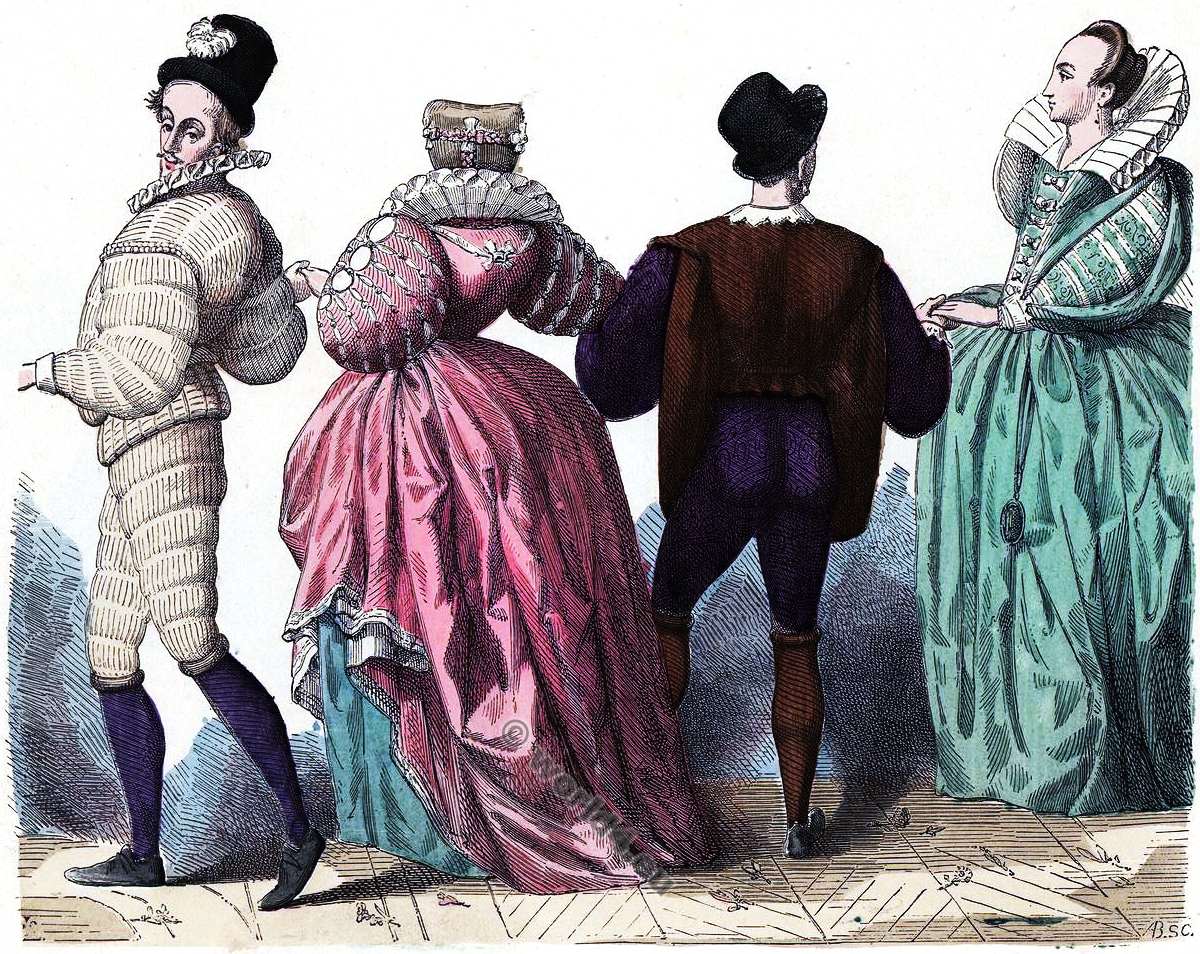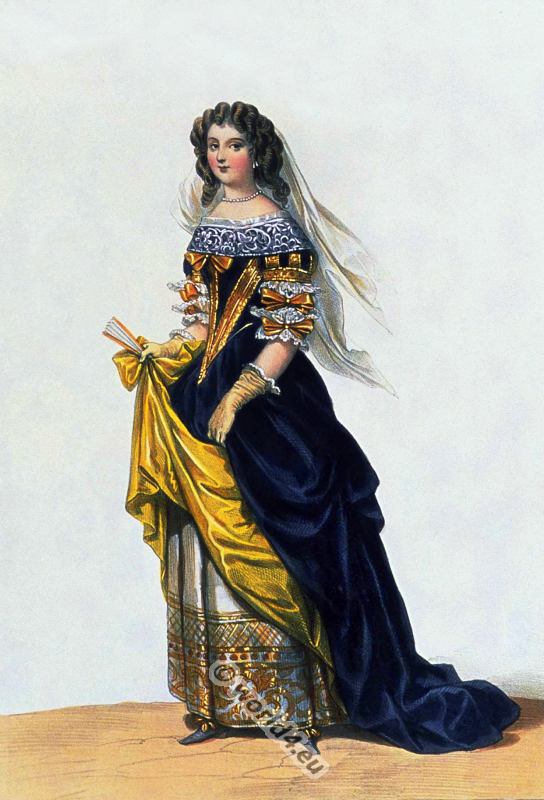Phoebus de Chateaupers. Captain of the archers.
PHOEBUS DE CHATEAUPERS was a young man of aristocratic, though somewhat arrogant and swaggering, mien-one of those fine fellows about whom all women agree, although serious men and physiognomists shrug their shoulders at them. The youthful cavalier wore the brilliant uniform of a captain of the archers of the household troops.
Hugo’s” Notre Dame de Paris.” G. Brion, Artist. Pannemaker, Engraver.
Notre-Dame de Paris is a 1831 published historical novel by French writer Victor Hugo (1802-1885). The beginning of the novel forms a crowd scene of medieval Paris: the double celebration of the Epiphany and the fools day on 6 January of the year 1482nd. An important figure of the fool festival is Esmeralda, a gypsy girl who wins viewers through her dancing and attracts followers. Quasimodo wants to kidnap Esmeralda, but this stopped by a captain of the royal bodyguard named Phoebus. Quasimodo was a misshapen foundling raised by the provost of Notre-Dame, and adapted for Hunchback of Notre Dame.
Esmeralda.
IN the vast space left free between the crowd and the fire, a young girl was dancing. “She was not tall, but seemed to be, so proudly erect did she hold her slender figure. She was brown, but it was evident that by daylight her skin must have that lovely golden gleam peculiar to Spanish and Roman beauties. Her tiny foot was Andalusian, too, for it fitted both snugly and easily into its dainty shoe. She danced, she turned, she twirled upon an antique Persian carpet thrown carelessly beneath her feet; and every time her radiant figure passed, as she turned, her great black eyes sent forth lightning flashes.
“Upon her every eye was riveted, every mouth gaped wide; and in very truth as she danced to the tune of the tambourine which her round and graceful arms held high above her head, slender, quick and alive as any wasp, with smooth-fitting golden bodice, her many-colored full skirt, her bare shoulders, her shapely legs, from which her skirts now and then swung away, her black hair, her eyes of flame, she seemed more than mortal creature.”
Hugo’s” Notre Dame de Paris.” G. Brian, Artist
Source: Character sketches of romance, fiction and the drama by Rev. Ebenezer Cobham Brewer, 1892. A revised American edition of the readers handbook. Edited by Marion Harland.
Related:
Medieval, Renaissance, Belle Époque.
- Reigns of John and of Charles V. 1350 to 1380. (Medieval, Byzantine, Gothic)
- Reigns’ of Charles VI. and Charles VII. 1380 to 1461. (Medieval, Gothic, Burgundy)
- Reigns of Louis XI, Charles VIII, and Louis XII. 1461 to 1515 (Late Medieval, Burgundy, early Renaissance)
- Reign of Francis I. 1515 to 1545. (Renaissance, Tudor)
- Reign of Henry II. 1547 to 1558. (Tudor, Renaissance)
- Reign of Francis II. 1559 to 1560. (Tudor, Renaissance)
- Reign of Charles IX. 1560 to 1574. (Tudor, Renaissance, Spanish court dress)
- Reign of Henri III. 1574 to 1589. (Renaissance, early Baroque, Spanish court dress, Tudor)
- Reigns of Henri IV. and Louis XIII. 1589 to 1643. (Renaissance, Baroque)
- Reign of Louis XIV. 1643 to 1715. (Baroque)
- Reign of Louis XV. 1715 to 1774. (Rococo)
- Reign of Louis XVI. 1774 to 1780. (Late Rococo)
- Reign of Louis XVI. 1780 to 1789. Le Pouf. Fashion in the Ancien Régime.
- The Reticulated Headdress. 15th century. Medieval Burgundy era.
- The Hennin. 15th century. Medieval Burgundy era.
- Costumes de Noblesse du 14ème siècle. Histoire de la mode médiévale.
- Gabrielle d’Estrées, mistress of the French King Henry IV. 16th century, Renaissance fashion era.
- Henri de Lorraine, duc de Guise. France 16th century. Huguenot wars.
- Madame de Pompadour. Her political power and general influence to Louis XV. Rococo era.
- 15th century medieval room interior. The history of Tobit. Historia Scholastica.
- The Corset and the Crinoline. Introduction of Cottes-Hardies. The Ladies of Old France.
- Pictures and Royal Portraits Illustrative of English and Scottish History.
- Les Modes de la Renaissance de l’an 1461 à l’an 1574.
- The Corset and the Crinolin.
- Characters of The Commedia dell Arte. Italian Renaissance Theater.
- The Rise of Monachism. Monastic costumes history.
- On the history of costumes. Fashion gallery from ancient until the 19th century.
Discover more from World4 Costume Culture History
Subscribe to get the latest posts sent to your email.


